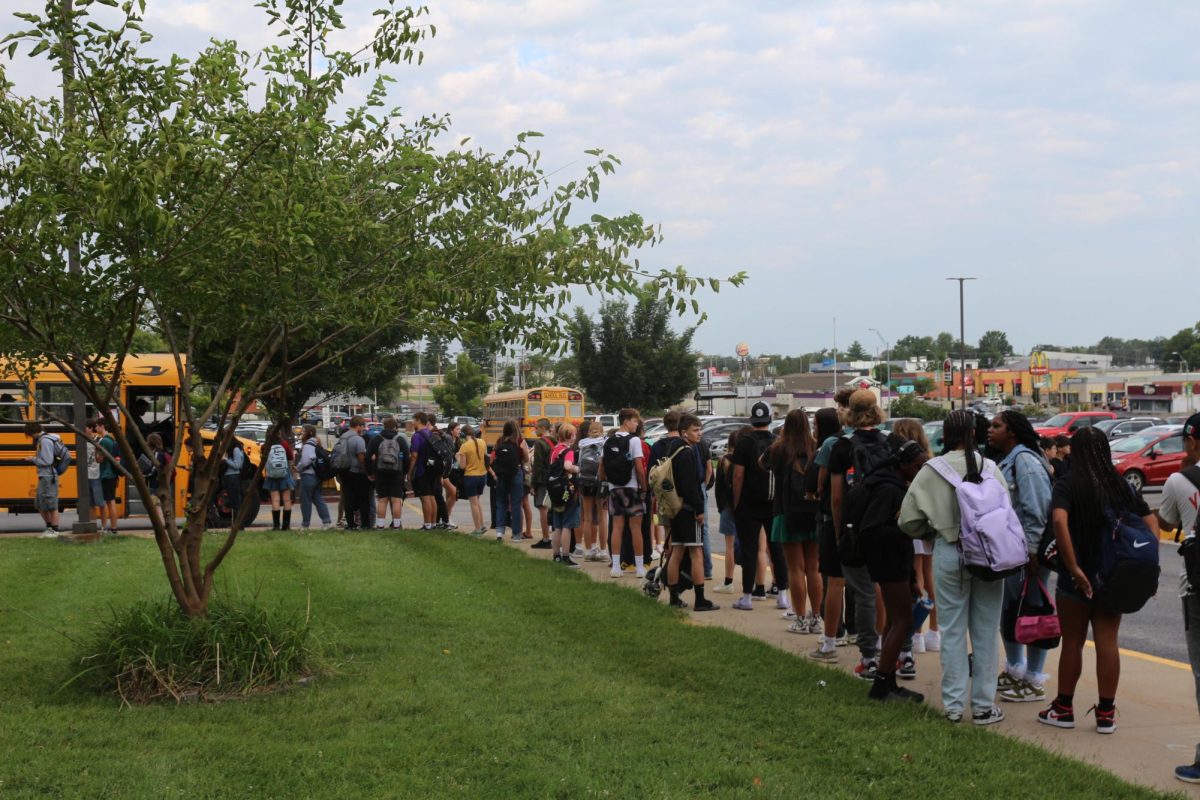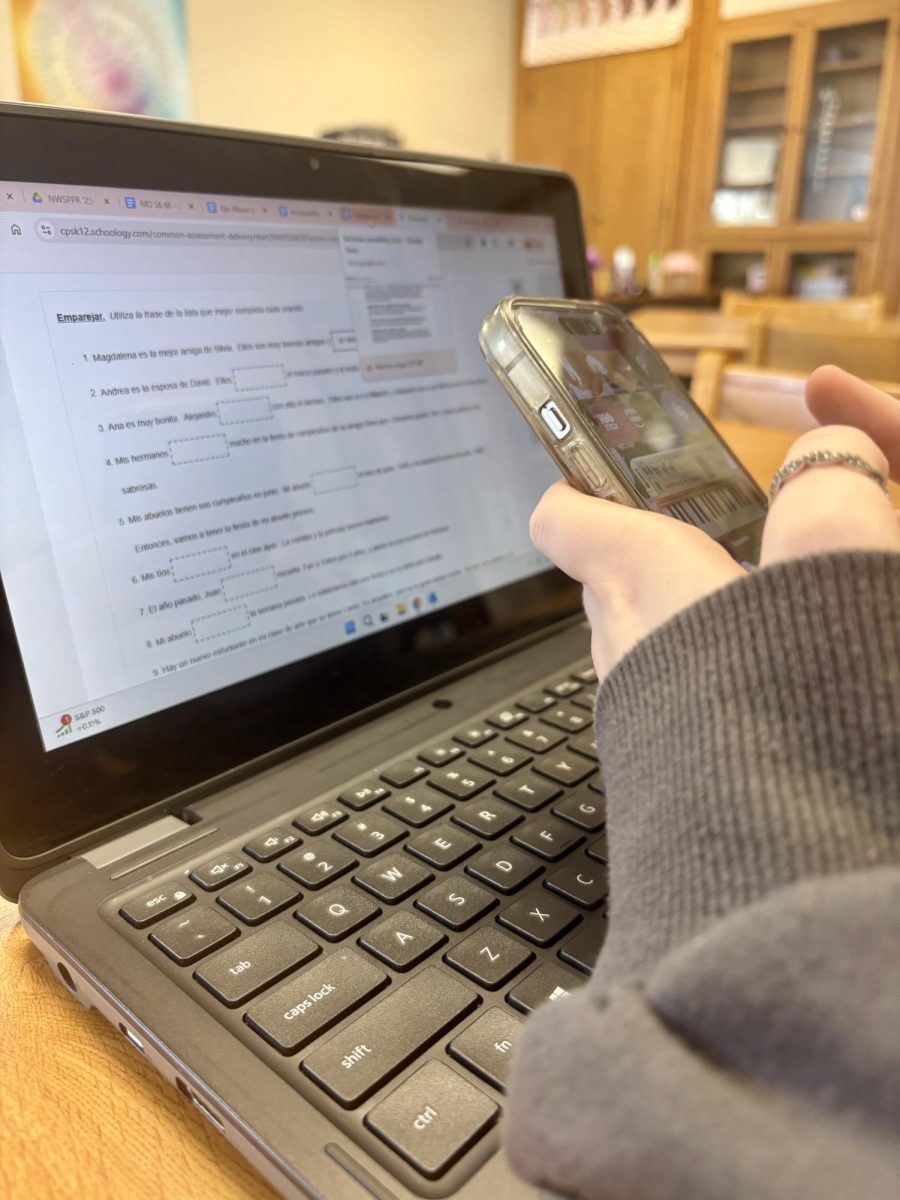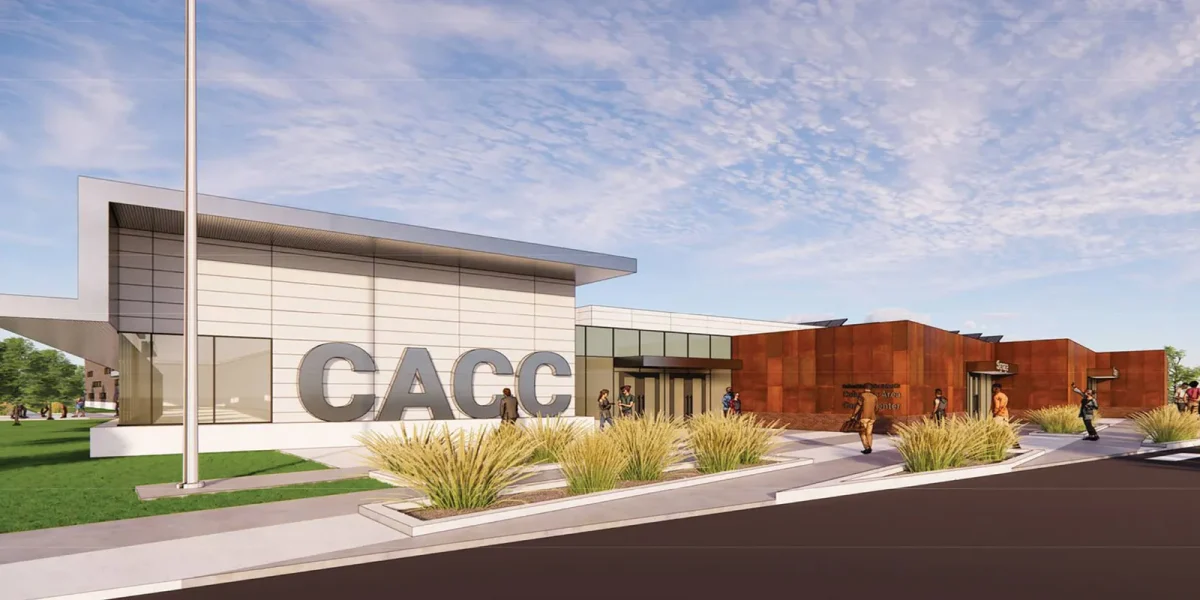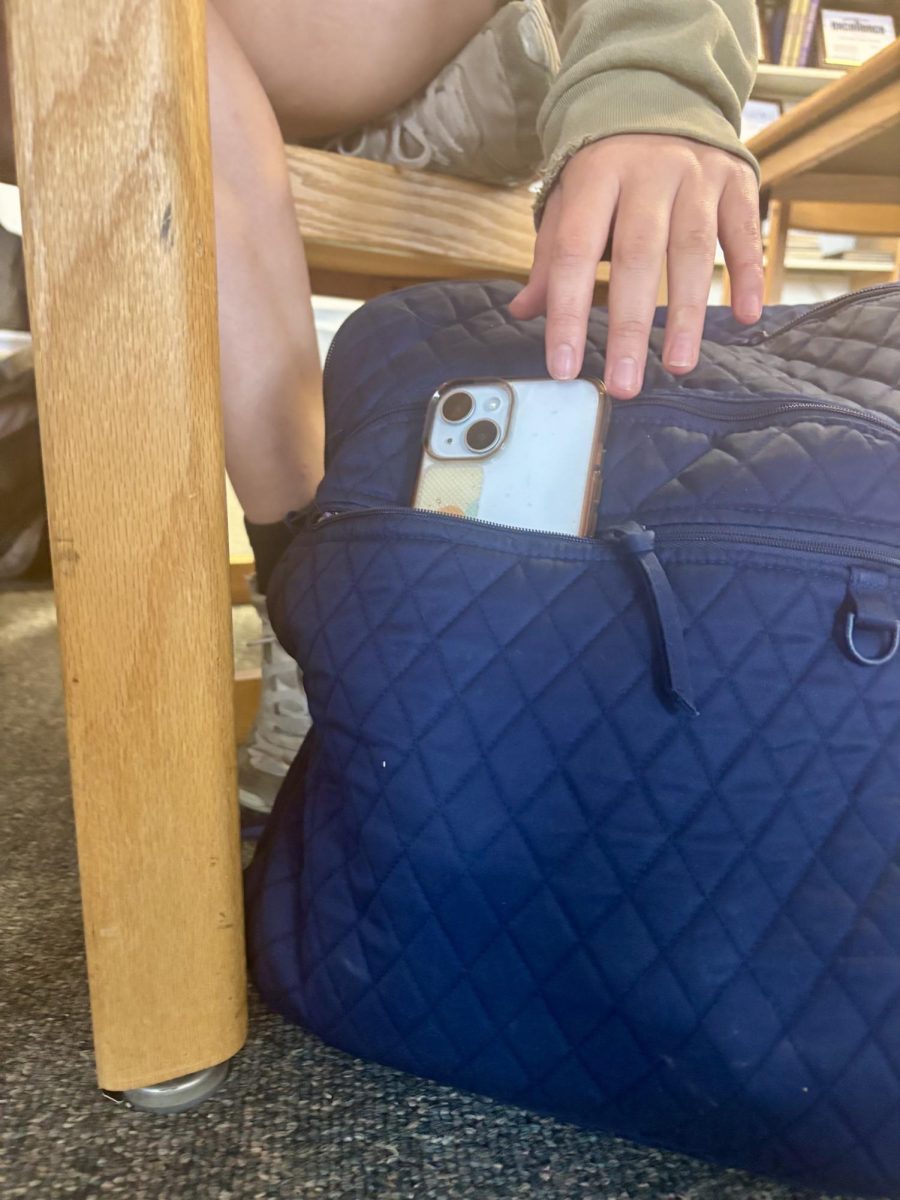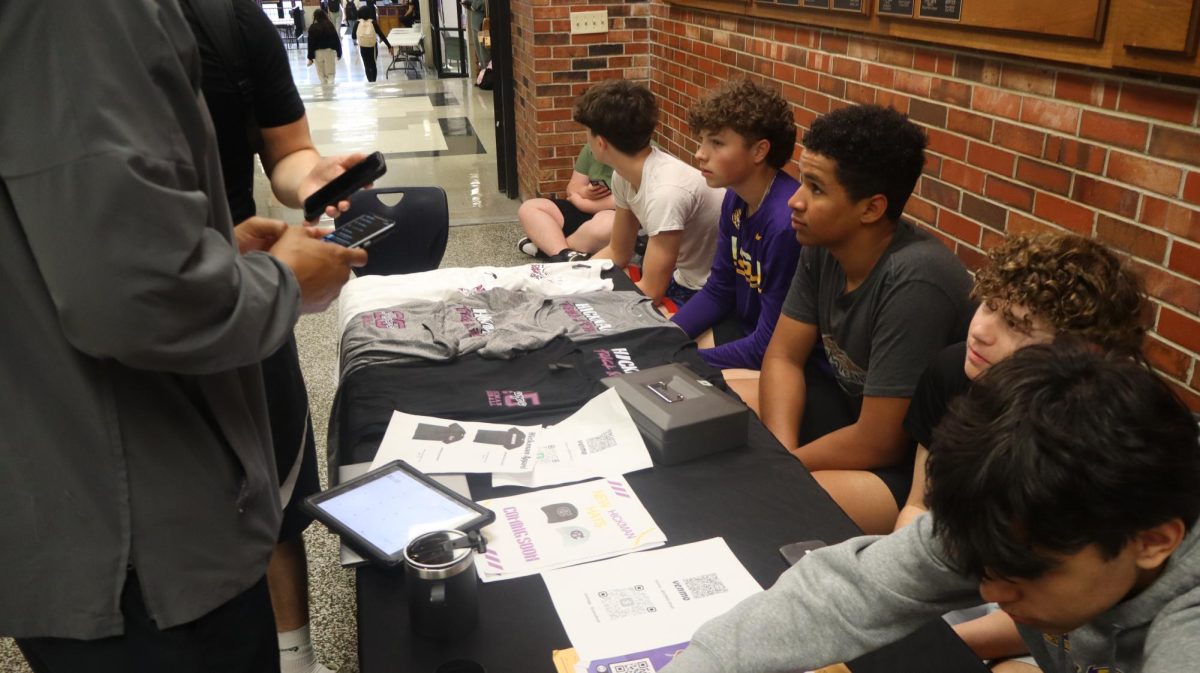On the first day of school, Hickman students waited for over 40 minutes after the bell to get to their first block class; the line stretched from the North and West entrances to Business Loop.
Subsequent days have seen wait time decrease, but students are still not making it to class by the first bell. On the fifth day after implementation, Tuesday, Aug 27, all students were in class by 9:03.
While many students understood the reasoning behind the Weapons Detection System, they felt frustrated with the wait time.
“I’ve been stuck in 30 minute lines, and those honestly are unacceptable, like I cannot be getting to class at 9:30,” Leander Brandle (12) said.
In an email sent by principal Mary Grupe, students were advised to “hold items likely to trigger the system before reaching the entrance.” However, even with students’ efforts to adjust their routines, they were still late.
“I’ve been late to my first block, I think almost every day this week because of it. Usually, I used to be able to get here at like 8:40 and still get to class on time, but I can’t do that anymore,” Aryanna Popp (11) said.
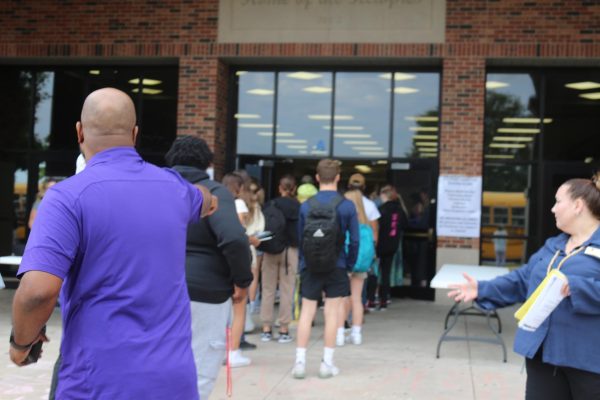
In addition to difficulties entering the school, getting in between parts of the building proved to be an obstacle. Parents and students voiced concerns, particularly regarding the passage between the Fine Arts Building and the main school building.
Freshman Myla Lewis had art on the first day of school, so she had to re-enter the building after her art class.
“It took up about 40 minutes to get inside, so I didn’t get to eat lunch that day,” Myla said.
However, the Weapons Detection Systems have learned from the data they have collected from every backpack that walks through the system. Administration and security officers hope this will make the process faster over time.
“I think it’s just learning what you can and can’t get through,” Security Officer Teveyon Gayton said.
While the Weapons Detection Systems were a district policy, Hickman’s Students for Change club spearheaded the advocation for these types of systems.
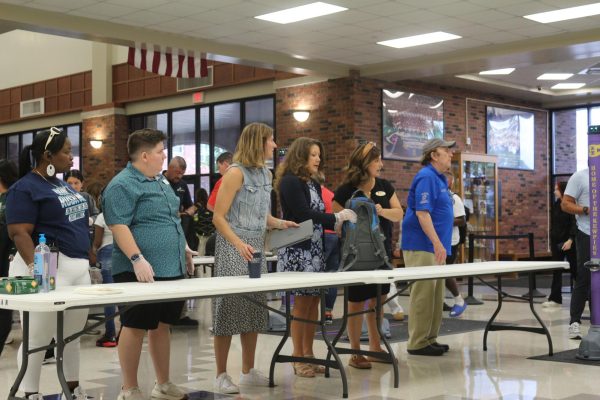
“[Students for Change] was where that initial idea started, but the inner workings and the procedural pieces, that is at the district level,” Grupe said.
Despite the calls for these systems and the benefits of the systems, there are serious concerns on how this type of system can be sustained.
“If your parents are calling because they need something, every administrator is out here
…If a student [or teacher] needs something right now, [the systems] stop,” Grupe said.

